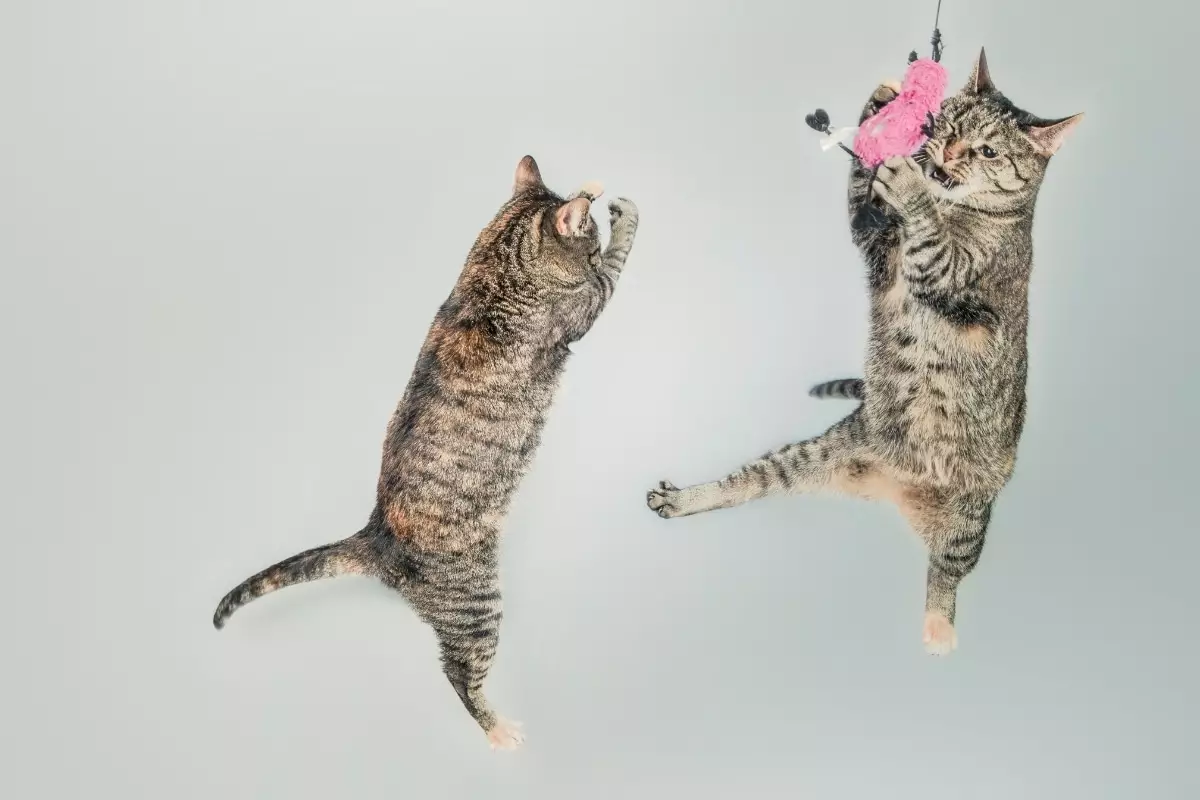Cats are renowned for their mysterious personalities and delightful quirks. While these independent creatures often spend their days lounging in sunbeams or observing the world from high perches, they also harbor an undeniable playful side. Recognizing the signs that your cat is in the mood for some fun plays a crucial role in strengthening your bond and ensuring their well-being.
One of the most exhilarating displays of feline playfulness comes in the form of the infamous “zoomies.” This sudden burst of energy can transform a typically calm cat into a speedy whirlwind, racing through hallways and performing acrobatic feats that defy physics. When you witness this display, it’s essential to understand that this behavior is more than just a whimsical moment; it reflects their need to expend pent-up energy and indulge their playful instincts.
Participating in this high-energy moment can enhance your cat’s play experience. Grab a feather toy or a ball and engage with them in a way that mirrors their excitement. By doing so, not only do you satisfy their need for movement, but you also deepen their enjoyment through your participation.
If you observe your cat in a crouched position, displaying an eerie stillness complemented by a playful gleam in their eyes, you are witnessing the setup for a classic feline pounce. This behavior, rooted deeply in their hunting instincts, is an invitation for interactive play. It’s essential to honor this moment by providing an appropriate “prey” toy, such as a wand with feathers or a small mouse figurine, which they can chase and capture.
The delight they derive from stalking and pouncing on their toys mirrors the thrill of the hunt, making playtime not just fun, but also an essential part of their mental and physical exercise. By mimicking these hunting scenarios, you not only entertain your cat but also offer an outlet for their natural instincts.
The tail is a fascinating indicator of feline emotions. A flicking or twitching tail isn’t always a sign of annoyance; when coupled with animated eyes and perked ears, it indicates excitement and playfulness. If you see your cat’s tail dancing in quick bursts while they fixate on a moving object, they’re inviting you to engage in a game. This playful language can be harnessed through dynamic toys, such as strings or balls, which keep their interest piqued.
Your responsive play can amplify the joy and satisfaction your cat experiences, leading to a more enriched life.
When your cat drops a toy at your feet or carries one around, it’s a clear signal that they want to play. This behavior communicates a desire for interaction; they’re not merely showing off their hunting prowess but are looking for you to partake in their game. Tossing the toy back or initiating a gentle game of tug will provide them with the social engagement they seek.
Additionally, some cats vocalize while carrying their toys, which sounds like an invitation for a joyful pursuit. By returning the invite with enthusiasm, you can transform a simple moment into a bonding experience that reinforces trust and connection.
An exposed belly is often interpreted as a sign of trust, but it may also serve as a trigger for playful antics. When your cat flips onto their back and uses swift paw strikes on your hand or ankle, they’re inviting you into a playful duel. However, it’s advisable to redirect this energy toward a soft toy to avoid accidental scratches and maintain a cheerful atmosphere.
Cats have a unique way of letting their guard down, and when they engage in these playful attacks, it reflects a sense of security in their environment. By providing appropriate outlets for these instincts, you can keep playtime safe and enjoyable.
Cats are natural predators, and their playful behavior often mimics hunting techniques. When they hide behind furniture or peek around corners, they are setting the stage for a game of chase. This ambush-style play allows them to hone their instincts while offering a thrilling experience for both feline and human participants.
By introducing movement-based toys or crinkly paper, you can inspire extended play sessions that cater to their natural instincts. This play is not only entertaining; it allows cats to tap into their predatory nature, which is critical for both their mental and physical health.
Understanding the playful signals your cat expresses is essential for creating a fulfilling environment for them. Observing their behaviors, from zoomies to crouched pounces and playful attacks, helps deepen the connection you share. Engaging in these playful moments transforms ordinary play into extraordinary bonding experiences.
Ultimately, playtime is not merely an activity; it’s a vital component of a cat’s life that enriches their emotional and physical well-being. So the next time your feline companion shows signs of playfulness, don’t hesitate—grab their favorite toy and dive into the world of feline fun!

